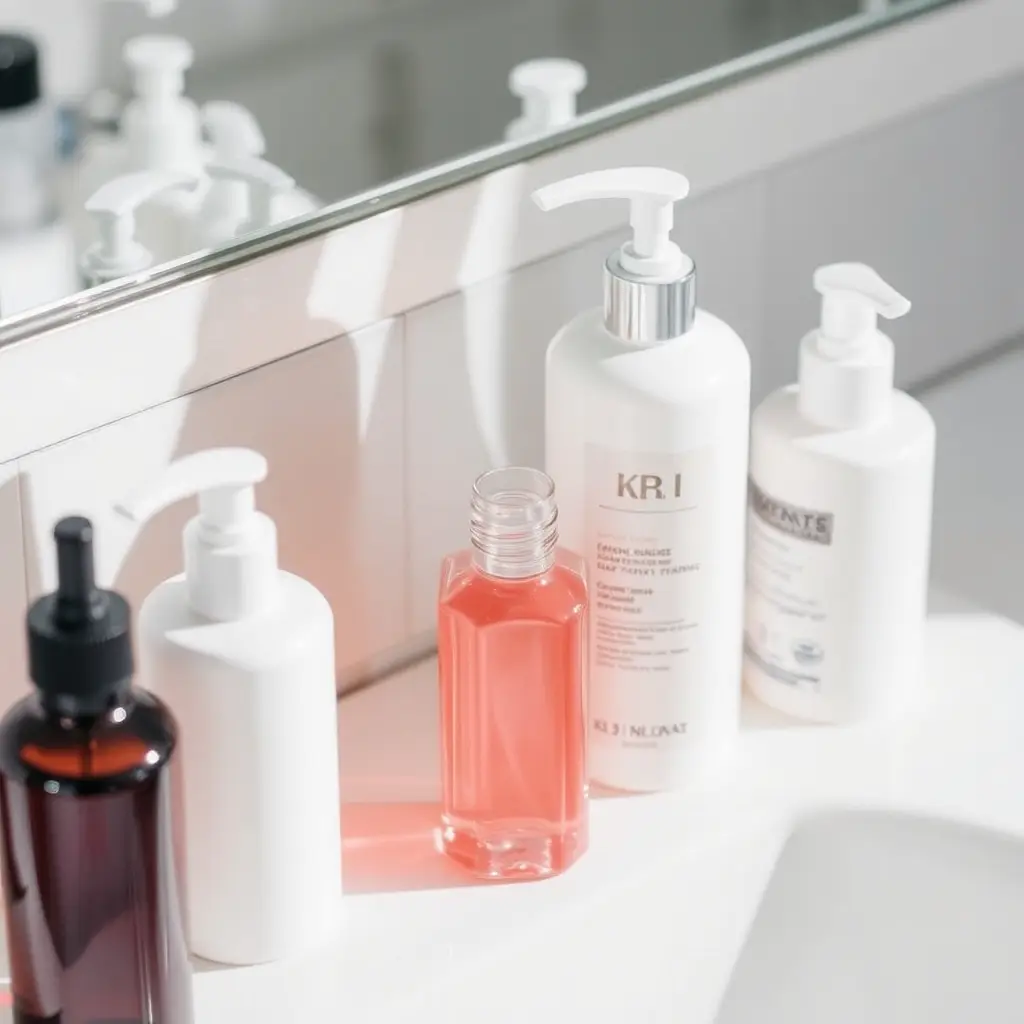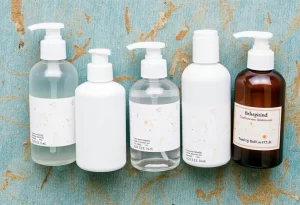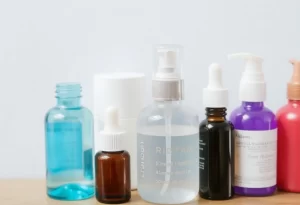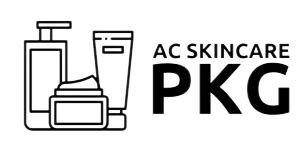
Как дезинфицировать флаконы для косметики
Меню содержания
● Важность чистой красоты: Руководство по дезинфекции косметических флаконов и поддержанию гигиены
>> Почему чистая красота имеет значение
>> Опасность грязных косметических бутылок
>> Последствия пренебрежения гигиеной
● Дезинфекция косметических бутылочек: Пошаговое руководство
● Частота санитарной обработки:
>> Не только бутылки: Дезинфекция других косметических инструментов
>> Советы по поддержанию красоты:
● Чистая красота: Выбор образа жизни
Важность чистой красоты: Руководство по дезинфекции Косметические бутылки и поддержание гигиены
Мир косметики - это яркий мир, наполненный постоянно расширяющимся ассортиментом продуктов, призванных улучшить нашу внешность и повысить уверенность в себе. Однако сама природа этих продуктов, которые непосредственно соприкасаются с нашей кожей, заставляет уделять первостепенное внимание гигиене и безопасности. В этой статье мы рассмотрим важность чистоты красоты, уделив особое внимание часто игнорируемой практике дезинфекции флаконов и контейнеров для косметики.

Почему чистая красота имеет значение
Термин "чистая красота" включает в себя целостный подход к красоте и здоровью, подчеркивая использование продуктов, которые одновременно эффективны и безопасны для нашей кожи и окружающей среды. Чистая красота включает в себя ряд факторов, в том числе:
-
Прозрачность ингредиентов: Чистые косметические бренды предпочитают использовать натуральные, этически обоснованные ингредиенты, не содержащие вредных химических веществ, таких как парабены, фталаты и сульфаты.
-
Устойчивые практики: Экологически чистые косметические бренды часто отдают предпочтение экологичной упаковке, этичному поиску поставщиков и безжалостному производству.
-
Гигиена: Именно этому вопросу и посвящена данная статья. Чистая косметика - это не только ингредиенты и упаковка, но и поддержание чистоты наших косметических инструментов и продуктов. Это очень важно для предотвращения роста бактерий, плесени и дрожжей, которые могут вызвать кожные инфекции и другие проблемы со здоровьем.
Опасность грязных косметических бутылок
Наши косметические флаконы и контейнеры со временем становятся рассадниками бактерий и других микроорганизмов. Это происходит под воздействием целого ряда факторов:
-
Воздействие влаги: Кремы, лосьоны и жидкости создают влажную среду, способствующую размножению микроорганизмов.
-
Воздействие воздуха: Каждый раз, открывая флаконы с косметикой, мы подвергаем их воздействию воздуха, который несет в себе бактерии и другие загрязняющие вещества.
-
Контакт с кожей: Наши пальцы и руки, на которых могут находиться бактерии, соприкасаются с продуктом и контейнером.
-
Теплые температуры: В ванной комнате, где часто бывает влажно и тепло, создаются идеальные условия для роста микроорганизмов.
Последствия пренебрежения гигиеной
Пренебрежение санитарной обработкой флаконов с косметикой может привести к целому ряду последствий:
-
Кожные инфекции: Загрязненная косметика может привести к появлению прыщей, сыпи и других кожных инфекций.
-
Раздражает глаза: Такие продукты, как тушь для ресниц и подводка для глаз, при загрязнении могут вызвать инфекцию и раздражение глаз.
-
Аллергические реакции: Бактерии и плесень могут вызывать аллергические реакции у некоторых людей.
-
Деградация продукта: Загрязнение может поставить под угрозу эффективность и срок годности нашей косметики.
-
Подорванное здоровье: В редких случаях зараженные продукты могут привести к более серьезным проблемам со здоровьем, особенно у людей с ослабленной иммунной системой.

Дезинфекция косметических бутылочек: Пошаговое руководство
Дезинфекция флаконов с косметикой - простой, но очень важный шаг в поддержании красоты. Вот подробное руководство о том, как эффективно продезинфицировать ваши косметические контейнеры:
1. Подготовка:
-
Соберите материалы:
-
Дезинфицирующее средство: Выберите дезинфицирующее средство, которое безопасно для использования на косметических флаконах. Изопропиловый спирт (концентрация 70%) - распространенный и эффективный выбор.
-
Ватные шарики или подушечки: Для нанесения дезинфицирующего средства.
-
Чистые полотенца или салфетки: Для сушки бутылок.
-
Теплая вода: Для ополаскивания бутылок.
-
Дополнительно: Миска или контейнер для замачивания маленьких бутылочек.
-
-
Опустошите бутылки: Полностью освободите бутылки от содержимого. Это необходимо для правильной дезинфекции.
2. Очистка и дезинфекция:
-
Вымойте бутылки: Вымойте бутылки изнутри и снаружи теплой водой и мягким мылом для посуды. Удалите все остатки продукта.
-
Продезинфицируйте бутылки:
-
Использование дезинфицирующего средства: Окуните ватный шарик или диск в дезинфицирующее средство и тщательно протрите внутреннюю и внешнюю поверхности каждой бутылки. Уделите особое внимание крышке и области вокруг отверстия.
-
Замачивание: Для маленьких бутылочек можно замочить их в миске с дезинфицирующим раствором (следуйте инструкциям производителя по разбавлению) на 15-20 минут.
-
3. Сушка и хранение:
-
Высушите бутылки: Тщательно высушите бутылки чистым полотенцем или тканью. Обязательно высушите все поверхности, включая крышку.
-
Дайте им высохнуть на воздухе: Для большей уверенности можно дать бутылкам полностью высохнуть на воздухе. Это особенно важно, если вы используете дезинфицирующие средства на спиртовой основе.
-
Храните бутылки: Храните продезинфицированные бутылки в чистом и сухом месте. Не храните их под прямыми солнечными лучами или в местах с повышенной влажностью.

Частота санитарной обработки:
-
Регулярная санитарная обработка: Обычно рекомендуется дезинфицировать флаконы с косметикой не реже одного раза в неделю, а для средств, которые используются ежедневно или имеют прямой контакт с глазами, - чаще.
-
Конкретные рекомендации: Всегда проверяйте этикетки продуктов, чтобы получить конкретные рекомендации по санитарной обработке и сроку хранения.
Не только бутылки: Дезинфекция других косметических инструментов
Те же принципы гигиены применимы и к другим косметическим средствам, таким как:
-
Кисти и спонжи для макияжа: Регулярно мойте эти инструменты с использованием мягкого средства для чистки щеток или мыла. Тщательно промойте и дайте им высохнуть на воздухе.
-
Аппликаторы: Очищайте и дезинфицируйте аппликаторы для теней, подводки для глаз и других средств в соответствии с указаниями производителя.
-
Косметички: Регулярно мойте или протирайте косметички, чтобы удалить грязь и бактерии.
Советы по поддержанию красоты:
-
Вымойте руки: Всегда тщательно мойте руки перед нанесением косметики.
-
Избегайте совместного использования: Не делитесь своей косметикой с другими, так как это может привести к распространению бактерий и других загрязнений.
-
Используйте чистый совок: Для таких продуктов, как порошки и кремы, используйте чистую ложечку или лопаточку, чтобы не испачкать весь продукт пальцами.
-
Замените старые изделия: Утилизируйте старые или просроченные продукты, даже если они все еще кажутся пригодными для использования.
-
Обращайте внимание на признаки загрязнения: Если вы заметили какие-либо признаки загрязнения, например, изменение цвета, запаха или текстуры, немедленно избавьтесь от продукта.
Чистая красота: Выбор образа жизни
Соблюдение чистоты - это не просто поддержание здоровья кожи, это целостный подход к здоровью. Это осознание того, какие ингредиенты мы используем, как наш выбор влияет на окружающую среду и как важна гигиена в нашей ежедневной косметической рутине. Внедряя эти практики в свою жизнь, мы можем создать более светлое и здоровое будущее для себя и планеты.
